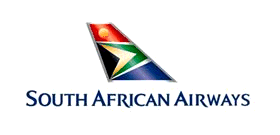 The African Battleground: Ethiopian Airlines vs Kenya Airways vs SAA
The African Battleground: Ethiopian Airlines vs Kenya Airways vs SAA
The African aviation market has seen plenty of change in the past years. As South African Airwaysã situation has worsened, that of Ethiopian Airlines and Kenya Airways has improved. The two have battled to become the leading hub in East Africa. Ethiopian Airlines has moved ahead now, but this was not always the case. This article looks at this battle through the story of each of the three airlines.
Changes in African aviation
South African Airways stands out historically as one of the oldest airlines in Africa, and a leading international carrier. It has suffered setbacks, though, first with apartheid and later financial problems. It is currently grounded, with uncertainty over when it will get back in the air.
Meanwhile, other airlines not facing these problems have expanded much faster. Kenya Airways and Ethiopian Airlines stand out, with rapid expansion and growing international connections.
The past decade has seen something of a battle between the pair to grow as African hub-based airlines. Both these airlines launched ambitious plans after the financial crisis of 2007 to 2008 but with different levels of success.
Data for the year to May 2019 shows the following passenger numbers for each airline (as reported by Routesonline). The situation has worsened, of course, since then, especially for South African Airways.
Ethiopian Airlines ã 13.3 million passengers (top operator in Africa) Kenya Airways ã 4.9 million passengers (sixth place in Africa) South African Airways ã 4.6 million passengers (seventh place)
Going back to 2010, however, paints a very different picture. At that time, South African Airways was flying eight million passengers, and Ethiopian Airlines just over three million.
We take a look now at each of these airlines in turn, highlighting their rises and falls to where they are now.
South African Airways
South African Airways was one of the first carriers in Africa, founded in 1934. Interestingly, Egyptair can claim to beat it (it was founded in June 1932) ã but the origins of South African actually go back five years earlier with Union Airways. The newly formed South African government acquired Union Airways in February 1934, and South African Airways was born. It has remained government-owned since.
The airline expanded rapidly after the Second World War. A fleet of Lockheed Lodestar aircraft was acquired to operate domestic routes. And flights to Europe started in 1944. The first was a three-day route from Johannesburg to Bournemouth with an Avro York aircraft, known as the ãSpringbok Service.ã
The DC-4, Lockheed Constellation soon followed. Then, the airline started jet services in 1953 with the de Havilland Comet, moving to the Boeing 707 in 1960. Services to Sydney and New York were added in the late 1960s and the 747, from 1971, opened up many new routes.
Its problems, though, began in the 1980s. Due to international opposition to apartheid, many flights were stopped, with many routes not resuming until the 1990s. It flourished once again, though, adding the 747-400 in 1991 and a new A320 fleet for regional services. It joined the Star Alliance in 2006 ã still at the time the largest airline (by passenger number) in Africa.
South African Airwaysã decline
Financial difficulties began soon afterward. Having not turned a profit since 2011, it entered administration in 2019. Several factors contributed to this decline over the years.
Local competition had become an increasing problem since deregulation in the 1990s, with airlines such as Comair and FlySafair snagging chunks of the airlineãs traffic. Other African airlines also moved in to operate more connecting flights ã including Ethiopian and Kenya Airways. A weakening currency particularly impacted its fuel costs. Internal political and corruption issues continued to cause problems. The airline suffered with a growing debt burden and fines imposed for uncompetitive behavior. With such costs, it struggled to invest in operations. It was stuck with the A340 aircraft. Flying four engines at a time of rising fuel prices hurt its long-haul operations.
Attempts to rescue the airline have drawn on since 2019. There have been issues with promised government funding and labor disputes. There are hopes a revived SAA may take to the skies by July 2021, but this is not certain. Whenever it does, it will be a shadow of its former size ã and it still has the troublesome A340s to deal with.
Ethiopian Airlines
The story of Ethiopian Airlines and its rise is very different, with rapid expansion in recent years. The airline started service in 1945 as part of plans to modernize the country. It expanded over the next decade largely with support from TWA and then the US Export-Import Bank. It brought in five Douglas C-47 aircraft from the US government and later acquired Convair and DC-6 aircraft.
It expanded as a hub carrier through the 1980s and 1990s. Ethiopian was the first African airline to order the Boeing 767, and it expanded service to South Africa, Asia, and the US. The problems facing competitor South African Airways at this time likely gave the airline a leg-up in some markets.
Its rise to the top position it is in today really started in 2005. At the time, the airline lagged behind South African Airways, EgyptAir, and Kenya Airways. But it launched a plan to grow its passenger volume to three million by 2010.
It exceeded this and launched an even more ambitious plan to reach 18 million and more than double its fleet size by 2025. It became the largest African carrier in 2019.
As well as growing its hub traffic in Addis Ababa, it has also expanded through investment in other airlines. In 2013, it took a 49% stake in Malawi Airlines. Other investments include ASKY Airlines, Ethiopian Mozambique Airlines, and Zambia Airways. Now, it is even looking at a possible South African Airways joint venture.
In 2021, it sits in a strong position. Not only is it the largest African carrier, but it has also survived the slowdown better than its competitors. It started in a stronger financial position (and has not sought a bailout) and has also proved agile and able to adapt. Simple Flying looked at this in an interview with Chief Operating Officer Esayas WoldeMariam in August 2020.
Kenya Airways
Kenya Airways is the latecomer of the three, only launched in 1977 out of the remains of East African Airways. Locally it flew the DC-9 and the Fokker F27-200. And it started longer flights with two leased Boeing 707s from British Midland. It expanded its destinations and fleet significantly through the 1980s (again, likely boosted by South African Airwaysã troubles).
In the 1990s, it headed in a very different direction from both Ethiopian and South African, with privatization. This saw KLM take 26% and the Kenyan government 23%, with 51% publically traded. The government switched to the majority holder (with 29.8%) in 2012. The airline grew steadily through this, despite delays and challenges, ahead of Ethiopian in passenger numbers (but not South African) until at least 2012.
This was not to last, though. While Ethiopian Airlinesã bold expansion plans worked well, Kenya Airways started to suffer problems. It has launched an expansion plan (Project Mawingu), but this was not successful. Overspend on expansion led to losses over several years. Bad fuel hedging and difficulties with KLM also contributed.
Its passenger numbers have held firm, whereas those of Ethiopian have soared. In 2012, it carried 3.6 million. For 2019, this had risen to only 4.9 million. A further turnaround plan was announced in 2018. But with the current slowdown, it remains to be seen where this will head. And it may well once again become a government-owned company. The shareholding has now moved to 48.9% government (with KLM reduced to 7.8%), and this may shift further.
African aviation post-COVID
Before the slowdown in 2020, Africa was one of the fastest-growing aviation markets in the world. By late 2020, IATA predicted a drop in traffic of 54% and a GDP decline of $35bn. There has been optimism from Ethiopian Airlines, at least, about the recovery potential.
Esayas WoldeMariam explained this to Simple Flying in an interview. With just 10% of trade conducted within Africa, there remains huge potential for African airlines to grow. Overseas trade remains 80% dominated by foreign carriers. He said,
ãWhat I would like to see for Africa is for African aviation to continue growing, enabling African youths to have good employment. I would like to see Africa transacting with each otherãÎ we are such a big a market for each other, there is a lot of possibility which we have not yet explored. It is our prediction that aviation for Africa has a bright future and the best is yet to come.ã
The three airlines find themselves in very different positions, though, as the market recovers. Ethiopian Airlines clearly looks well placed to continue its expansion. Kenya Airways could pick up if it sorts its nationalization plans successfully. Others, including Royal Air Maroc, EgyptAir, and Air Algerie, are also placed to benefit from growth.
South African Airways is the biggest unknown. Its future is somewhat stalled in early 2021, but there are hopes it will take form later this year. There could even be a collaboration with Ethiopian Airlines. It has offered a joint venture, but talks are struggling. Adding services in the South African market would be a great addition for Ethiopian with its more hub-based model; taking on debt and other problems would not (and it is not proposing to do this).
Things have changed a lot in African aviation over the past few decades. Ethiopian Airlines has clearly had a great rise. Do you think this will continue and what are the prospects for other airlines? Feel free to discuss these three airlines and others in the comments.
